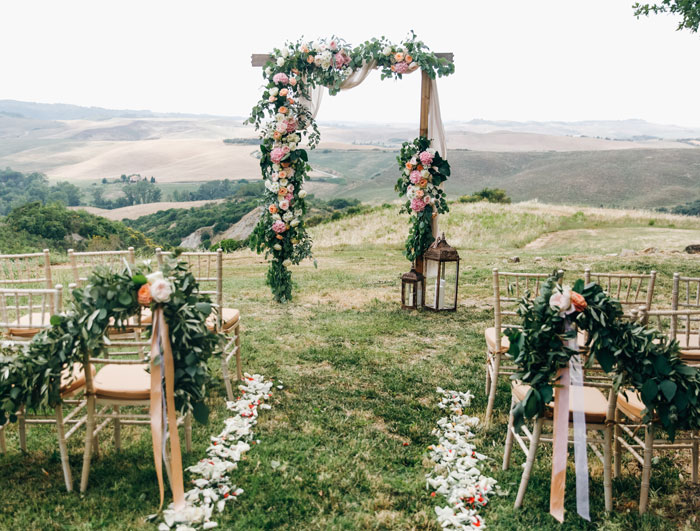The ceremony
Why a secular ceremony?
A civil wedding at the town hall/registry office/sheriff’s office is a legal formality, but doesn’t offer the solemnness and emotion of a beautiful ceremony. A religious wedding doesn’t mean anything to non-believers and certain religions don’t accept divorcees.
On the contrary a personalized secular wedding allows you to welcome – in a prestigious or original place (a castle, a family estate, a boat, a beach…) – family and friends so that the day remains truly unforgettable.
solemn and moving ceremony can also take place for other events: a renewing of vows, the union of two people of the same sex or of different religions, a secular baptism…
Many of you are looking for an alternative to traditional ceremonies which either don’t suit you or to which you don’t have access.
It’s a special moment that you offer to your family, your friends and yourselves; full of tenderness, joy, a sharing of emotions.

It’s a special moment that you offer to your family, your friends and yourselves; full of tenderness, joy, a sharing of emotions.
Red thread of a ceremony
A secular ceremony traditionally begins with the arrival of the procession of guests, witnesses and parents.
It is then the entrance of the groom, then the bride, accompanied or not by the groomsmen and bridesmaids.
After a personalized welcome message, the officiant explains to the audience why the bride and groom chose a secular ceremony, then reminds the future spouses of the legal principles of a union.
The bride and groom can, if they wish, pay tribute to their families.
Then the witnesses, invited by the officiant, will express their affection by reading personal testimonies or texts from authors.
The officiant himself takes pleasure in recalling certain moments of your life, of your meeting, of your relationship that you would have liked to entrust to him.
A time of contemplation, highlighted by discreet music, can be offered.
Will then follow the consent, the commitment of the spouses and the exchange of alliances.
The ceremony is interspersed with texts, poems, music, symbols (for example that of sand) chosen with the officiant..
A ceremony lasts on average 45 minutes.
